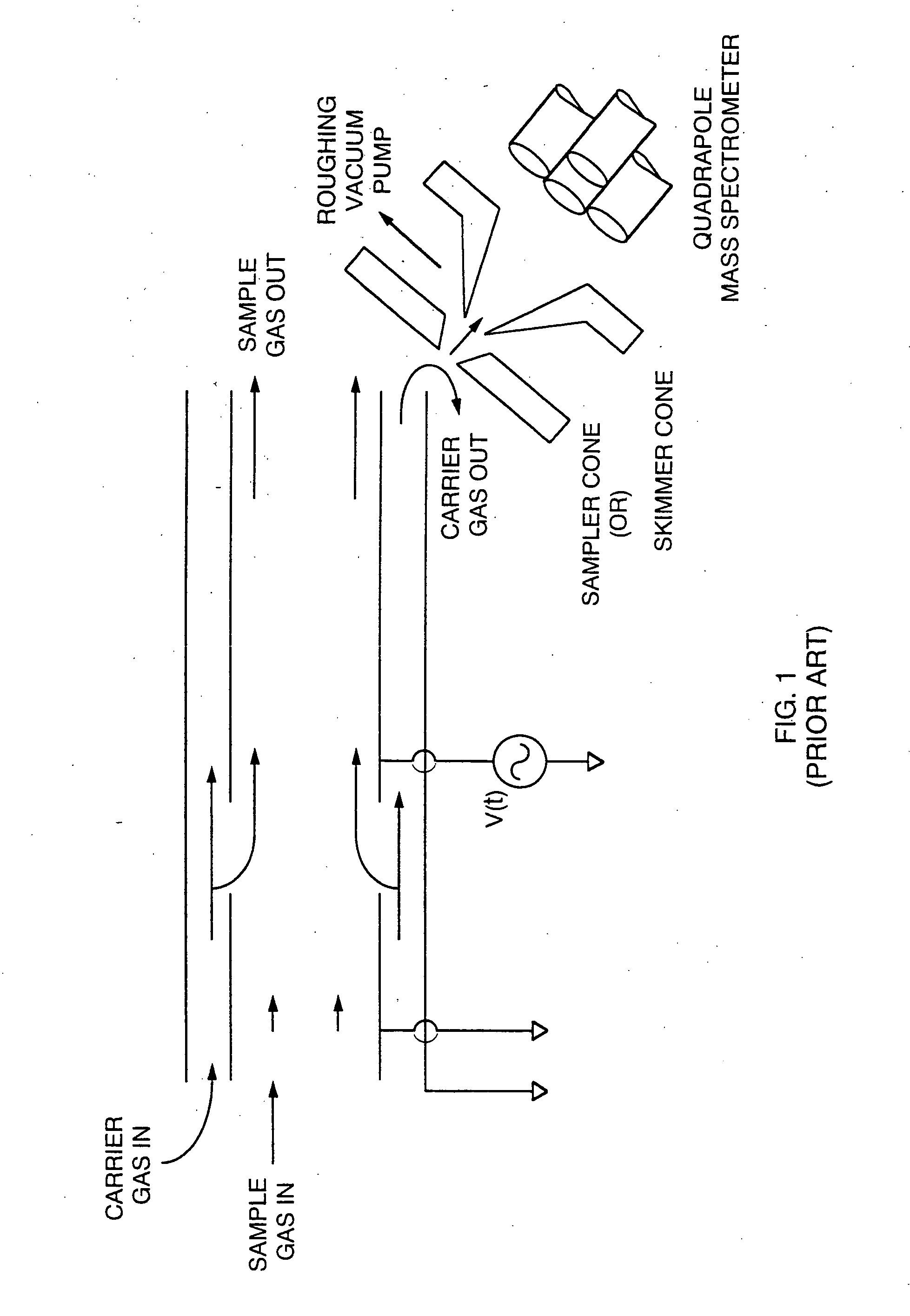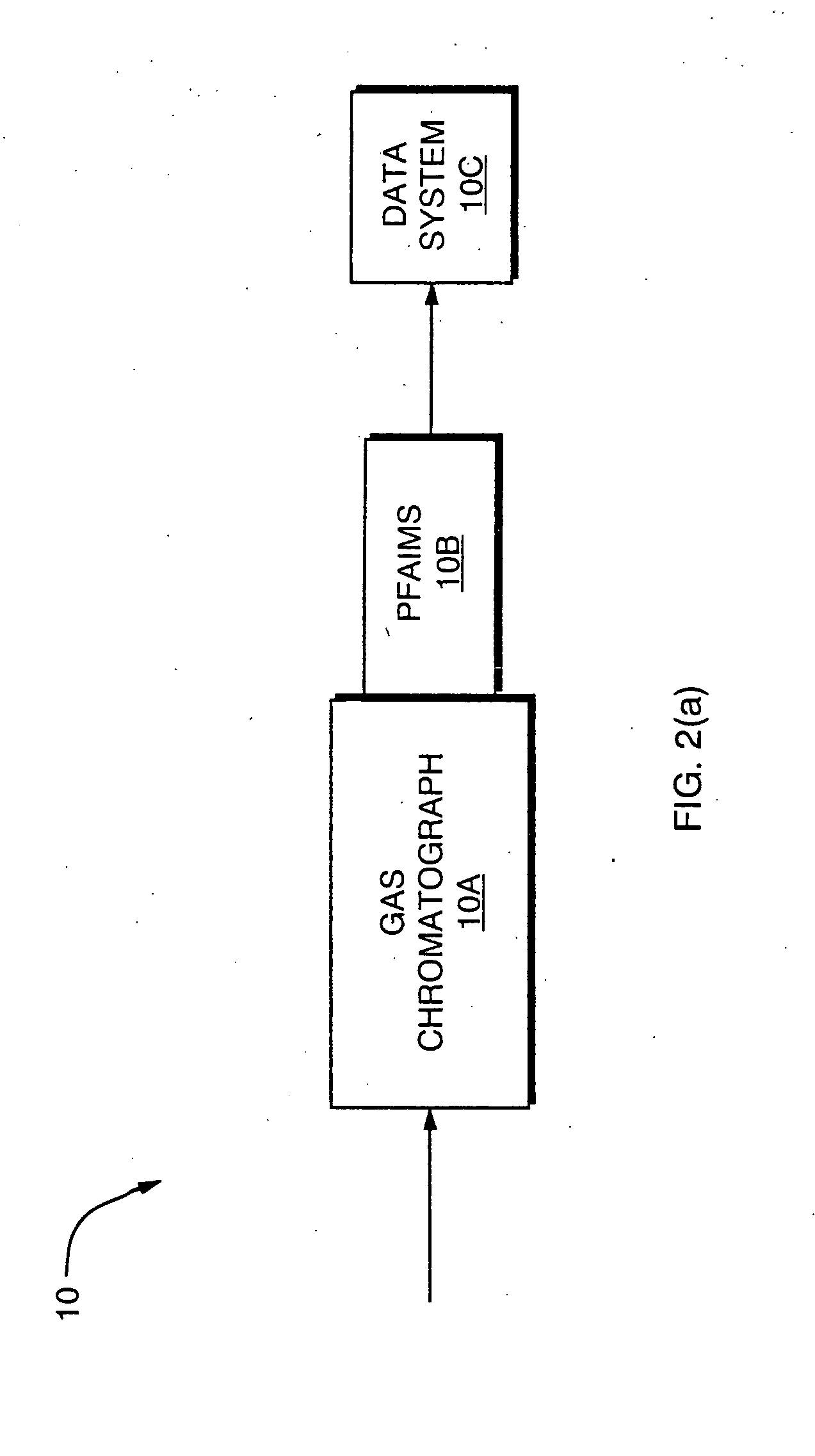Method and apparatus for chromatography-high field asymmetric waveform ion mobility spectrometry
a chromatography and asymmetric waveform technology, applied in the field of spectrometry, can solve the problems of low cost, low sensitivity, and inability to field instruments, and achieve the effects of eliminating time-consuming, high sensitivity, and low cos
- Summary
- Abstract
- Description
- Claims
- Application Information
AI Technical Summary
Benefits of technology
Problems solved by technology
Method used
Image
Examples
Embodiment Construction
[0091] The present invention provides methodology and apparatus for the analysis of compounds by gas chromatography high field asymmetric waveform ion mobility spectrometry. In a preferred embodiment of the invention, a GC-PFAIMS chemical sensor system 10, shown in FIG. 2(a), includes a gas chromatograph (GC) separation section 10A intimately coupled to a planar high field asymmetric ion mobility spectrometer (PFAIMS) section 10B, and enabled by a data and system controller section 10C. The data and system controller both controls operation of system 10 and appraises and reports detection data.
[0092] In practice of a preferred embodiment of the present invention, as shown in FIG. 2(b), the GC section 10A includes a capillary column 11 that delivers a carrier gas sample 12a (with compounds), eluting from the GC according to solubility, to the inlet 16 of the PFAIMS spectrometer section 10B. A drift gas 12c (which may be heated) is also introduced into the inlet 16 via a passageway 1...
PUM
| Property | Measurement | Unit |
|---|---|---|
| response time | aaaaa | aaaaa |
| velocity | aaaaa | aaaaa |
| diameter×2 | aaaaa | aaaaa |
Abstract
Description
Claims
Application Information
 Login to View More
Login to View More - R&D
- Intellectual Property
- Life Sciences
- Materials
- Tech Scout
- Unparalleled Data Quality
- Higher Quality Content
- 60% Fewer Hallucinations
Browse by: Latest US Patents, China's latest patents, Technical Efficacy Thesaurus, Application Domain, Technology Topic, Popular Technical Reports.
© 2025 PatSnap. All rights reserved.Legal|Privacy policy|Modern Slavery Act Transparency Statement|Sitemap|About US| Contact US: help@patsnap.com



